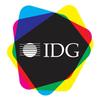It's not just about PCs anymore. Announcements at the opening of Comdex '96 marked how PC technology is being poured into a broad array of devices of varying sizes and shapes -- virtually all of which are being connected to the Internet.
The sea change in the PC industry marked by Comdex last year, when the industry was just starting to buzz about network computers, has became a riptide of announcements of Internet devices, computing appliances and PC-powered consumer goods, along with their related systems software and tools.
Software developers such as Microsoft and Lotus started off the week by showing off how they are going to let users access the World Wide Web from a variety of devices and software programs. Hardware and component vendors such as Intel talked about how a new wave of devices powered by PC technology will replace traditional consumer electronics products such as the television.
Firing a shot in the battle against traditional consumer electronics devices, Intel president and CEO Andrew Grove declared in his Comdex keynote speech that the PC is entering the age of visual computing. PC technology will challenge television's position as the world's leading consumer multimedia device, he says.
"We need to look at our business as more than simply the building and selling of PCs -- our business is the delivery of information and lifelike, interactive experiences," he says.
To show how PCs will be able to challenge television, Grove demonstrated the capabilities of Intel's forthcoming next-generation Pentium Pro processor by showing full-motion, software-only MPEG 2 movie clips from a digital video disk (DVD) drive on a PC.
On the software side, reigning PC software heavyweight champion Microsoft kicked off the week with the official launch of Windows CE, a scaled-down version of Windows 95 that will run on handheld computers and other devices, such as screen phones, digital video disk (DVD) players and set-top boxes.
Already, seven hardware vendors -- Casio, Compaq, Hitachi, LG Electronics, Hewlett-Packard and NEC -- have signed up to build hand-held devices based on CE, says Microsoft chairman Bill Gates. And of course, users can expect Internet connectivity.
"Bringing Web pages to the devices will be a significant application," Gates says.
Lotus has revealed plans for a new range of interactive Web-based business applications based on the Java language.
Lotus and its parent company, IBM, have assigned a group of up to 400 development engineers to one of the world's largest Java-based development efforts, Lotus president Jeff Papows says. The fruit of this programme, due to appear some time next year, will be a set of cross-platform applets called Lotus Components for the Internet, which users will be able to access from a Notes client or an Internet browser.
CompuServe, trying to hold its own as more and more users access the Internet through Internet service providers, has announced that it plans to let businesses set up customised online services using its network, pitching the offering as a way for companies to establish World Wide Web sites less expensively than if they built their own.
Meanwhile, several startups have unveiled a broad range of development tools for both professional and end-user developers of Web sites. For example, San Diego-based Template Graphics Software has rolled out the US$295 3Space Publisher, a tool for designing and authoring tool 3-D graphics that can be built into Web sites or embedded in desktop applications.
Other software companies have launched a variety of products to help corporations deal with the complexity of adding Internet access to their mix of computing tools for employees. Microsystems Software will release a version of its Internet filtering software for corporate users, company officials say. The company's Cyber Patrol Corporate allows corporate network managers to control employee access to the World Wide Web, Internet newsgroups, chatrooms and FTP sites in the same way that Microsystems' consumer software controls children's access to the Internet from home, company officials say.
The move to the Web, and the related need to store images in databases, will cause a shakeup in the world of systems and tools, say industry insiders. Companies that can not, for example, make the move from the relational databases that handle only data to databases that handle images and objects will fall by the wayside, according to Yogesh Gupta, senior vice-president of product strategy at Computer Associates.
"Oracle and big database companies may not survive to see the year 2000," he says.
Showing how far PC technology will stray from today's categories of computers, IBM has shown off technology that uses the electrical conductivity of the human body to transmit electronic data.
Using a receiver and a cigarette-box sized device, an IBM researcher transmitted contact information from his business card to a computer monitor by shaking hands with a volunteer from the audience.
The volunteer stepped on the device and shook hands with an IBM research staff member. The researcher stood on a foot-sized receiver, and once the two men touched, the researcher's business-card information appeared on a computer monitor, which was not physically connected to either device.
The device that hosts the transmission technology consists of a nine-volt battery, two electrodes, a microchip and an on/off switch, the researcher says.
